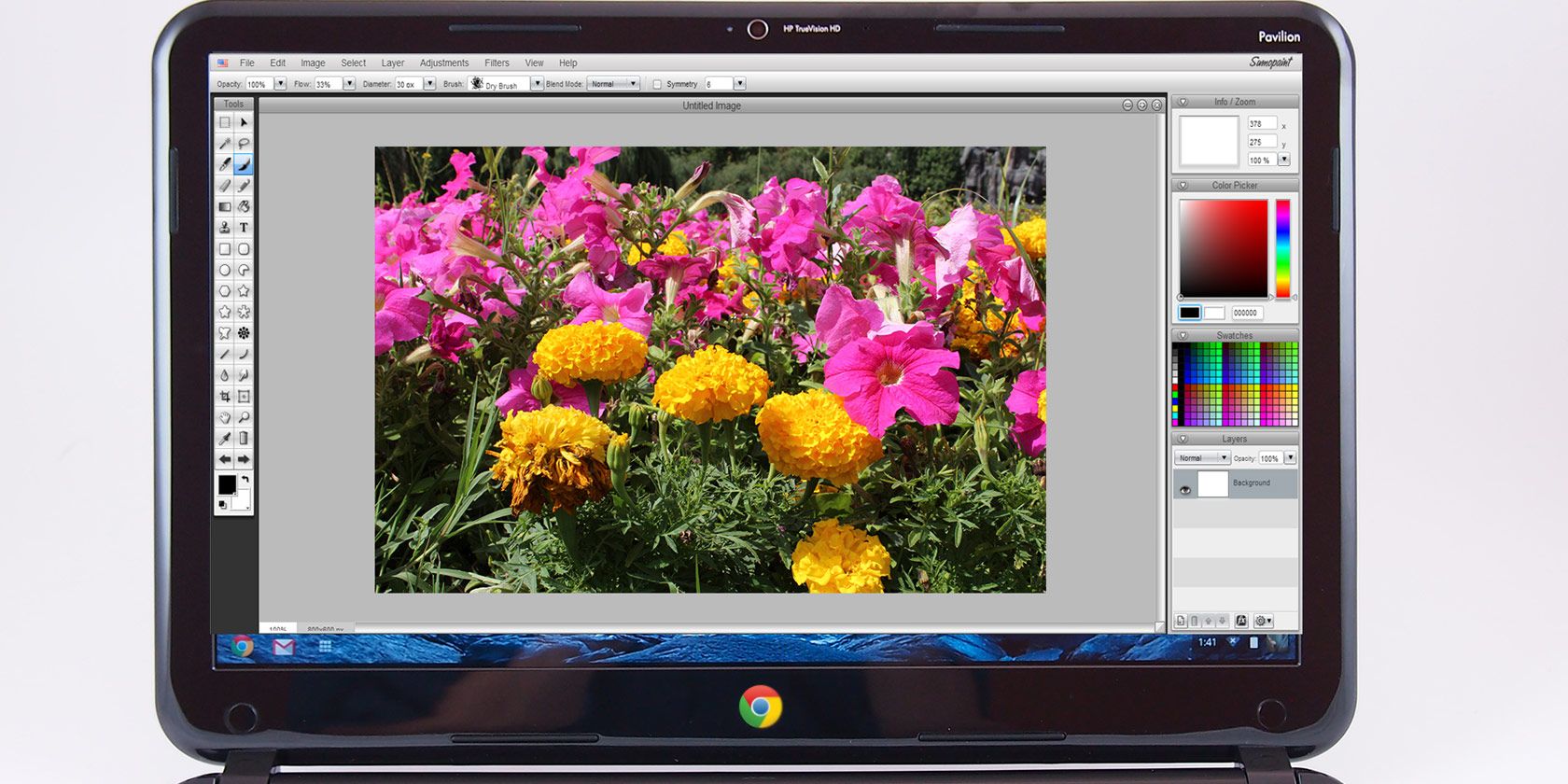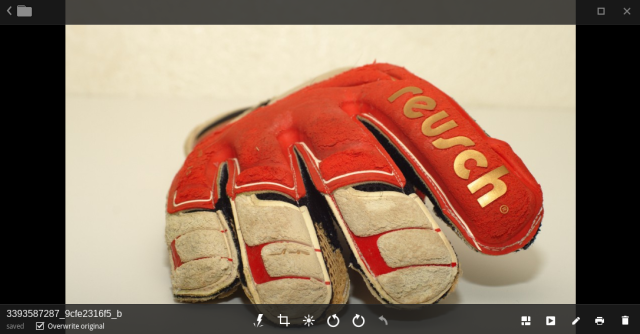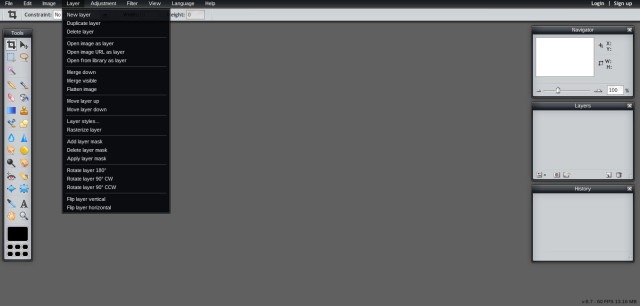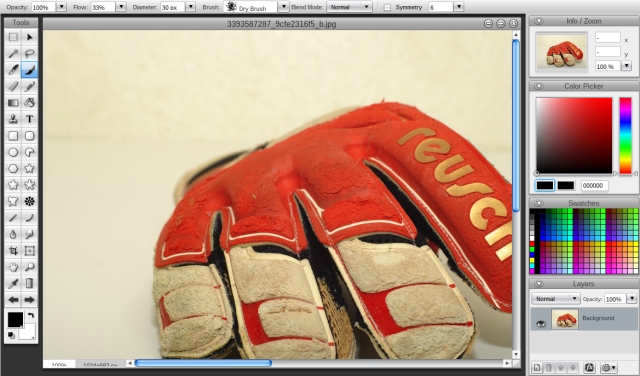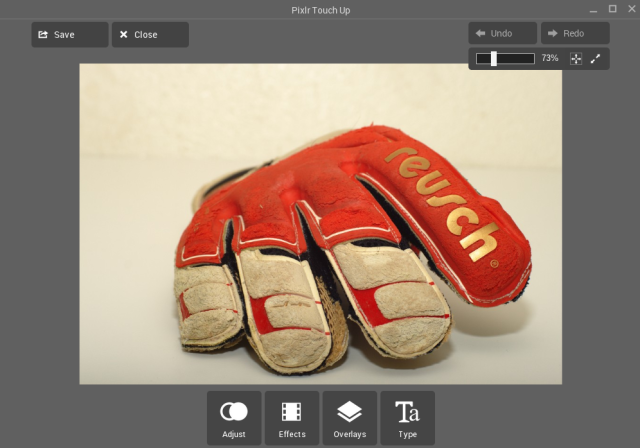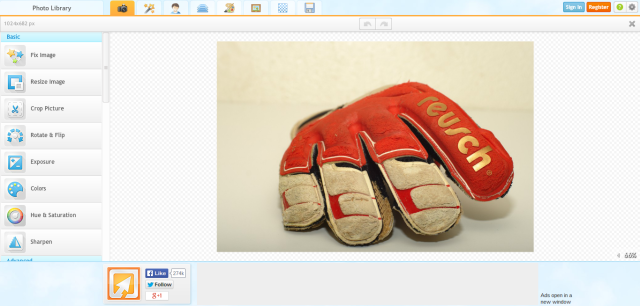Do you like editing and tweaking images but find the Chromebook's default editor too limited? Here are some alternatives.
The default editor on a Chromebook is extremely basic. It is opened by running the image viewer and clicking on the pencil icon, but beyond auto-enhance, crop, brightness, and contrast there are no further options available.
Luckily, there are both cloud-based editors and offline editors available through the Chrome Web Store. Here we have a look at some of the leading candidates to become your go-to image editor on a Chromebook.
1. Pixlr Editor
Pixlr Editor is currently the most powerful and full-featured photo editor available on Chromebook, and is the closest to Photoshop in terms of available features. The app is currently only web-based, which unfortunately means you'll have to be online to use it.
Although the app has faced criticism for using Flash rather than HTML5, the developers have defended their choice, saying “Flash still gives us big advantages compared to HTML5, like the 98% penetration of flash, open/save files local and a bunch of other stuff”. The Flash architecture means the app is actually available through any browser, not just a Chromebook.
Anyone who is accustomed to using GIMP or Photoshop will feel instantly comfortable when faced with Pixlr Editor's menus and layout. The app is equally adept at creating images from scratch, layering images and using a variety of filters, effects and level adjustments to transform photographs.
The editor is integrated directly into Google Drive, Picasa, Facebook and Flickr, and consequently it is easily accessible from Drive's web interface or the Chrome OS file explorer. The app can save files both locally and in the cloud, and you can also sign up for a free Pixlr cloud space.
Pixlr Editor won't be sufficient for the small percentage of advanced users who work with massive files, or need the advanced features of Photoshop, or need to work with RAW files from a camera, but for most people this app will remove the need for purchasing expensive copies of high-end software.
2. Sumo Paint
If you read our in-depth review of Sumo Paint you will quickly understand why it merits a place on this list.
Although Sumo Paint doesn't have the same level of integration with external websites as Pixlr Editor, it does have an extensive in-house community with over 500,000 members and 1,500,000 images, enabling users to discuss problems and share ideas.
Features include layering, filters and effects, 300 paint brushes, selection tools, image enhancement tools, shape tools, gradient tools, clone stamp tools, and image transformation types. The layer and shape choices are very user-friendly and more extensive than other paint-orientated image editors.
While the app lags behind its software-based counterparts in advanced importing and exporting, users who only want paint functionality and image design tools will find it difficult to find another program as expansive and comprehensive as Sumo Paint.
3. Pixlr Touch Up
Pixlr Touch Up is developed by Autodesk, the same company who produce the aforementioned Pixlr Editor. The app has just undergone a major upgrade, which added more than 100 new effects and adjustment options.
The key difference between Pixlr Editor and Pixlr Touch Up is that the latter works offline. The app lacks the extensive features of Pixlr Editor, but does contain all the essential editing tools such as resizing, adding effects, enhancing colour, adjusting brightness/contrast and altering focus. Arguably the most popular feature of the app, however, is the touch-up tool. This allows users to quickly and easily remove unwanted flaws and blemishes from images and photographs.
As with its big brother, the app can open files directly from local folders or, by connecting to Google Drive and accessing cloud-based images.
4. iPiccy Photo Editor
Less like Photoshop than the other options, iPiccy is only a photo editor and offers no image creation features. The app simply lists the available features in a column on the left of the screen, making navigation and editing much simpler for users who are unfamiliar with Photoshop's layers and features.
In keeping with recent social media trends, iPiccy has a range of Instagram-esque visual effects, frames, and text captions to bring personalisation and fun to your photos. The app does have some airbrush capabilities, such as wrinkle and blemish removers, but they have a slight smudging effect and result in the image losing some details.
Conclusion
There isn't a clear best, as it is all dependent on what you want from the image editor. For users who are familiar with the Photoshop experience and want to mimic Adobe’s software as closely as possible then Pixlr Editor and Sumo Paint are the leading candidates. However, for those who only want to edit and enhance a few family photos without the complexity of a full-feature editor then both iPiccy and Pixlr Touch Up will suffice.
You don't have to trust us - there are actually lots of options in the Chrome Web Store and you should check them all out before you make a decision about which will be your long term editor.
Do you already have a favourite? Have we missed off any leading candidates? Let us know in the comments below.
Image Credits: TechnologyGuide TestLab Via Flickr

